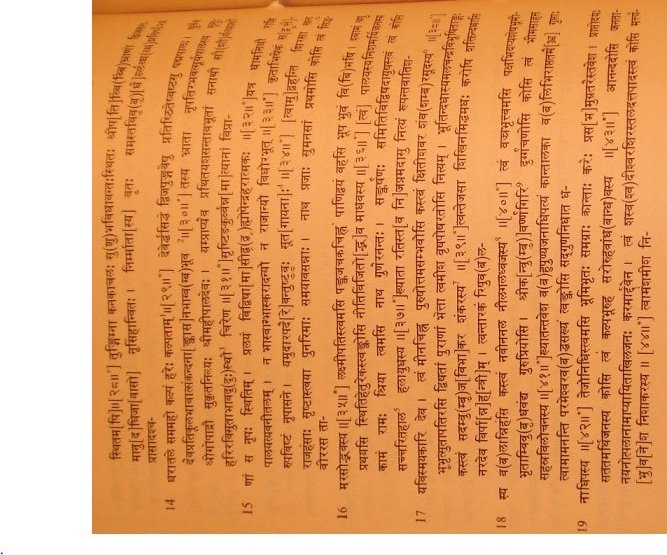|
INSCRIPTIONS OF THE CHANDELLAS OF JEJAKABHUKTI

__________________________
1 This verse intends to express eternity to the temple and also to its constructor, as shown by the particle cha and the description is applicable to both of these. Kielhorn’s translation does not bring out this
point.
2 That is, he died. Suṁkrandana is Indra. The number of the Brāhmaṇas settled by the king suggests
that they were as firm (pratishṭhita) as the eight guards of the quarters.
3 The visarga here, as after in l. 33, is dropped according to the vārttika on Pāṇini VIII, 3, 36.
4 All the three aksharas are mutilated and the reading may also have been Māgadhāḥ. Most of the following verses from 35 to 67 are full of words showing double meanings describing the king and the object
of comparison in identical expressions. All this portion is historically devoid of interest, as already
stated.
5 That is, who tears (ends) the age of his enemies (by killing them) and who has his good conduct as hala (hāla).
6 That is, Kāmadēva who was born of Kṛishṇa and also as killing the demon Śambara.
7 There is a play on the following words: bhūbhṛit meaning (1) king and (2) mountain, i.e., the Himalayas; vṛisha meaning (1) bull and (2) dharma; bhūti meaning prosperity and ashes. Śaṅkara is well
known as Purāri.
8 That is, Nandin, who is known to have extinguished the fire in the sacrifice performed by Daksha.
9 That is, Sumēru. Here vibudha means (1) learned persons and (2) gods, and guru means (1) a preceptor and (2) Bṛihaspati. Sahasra-vilōchana is Indra.
|